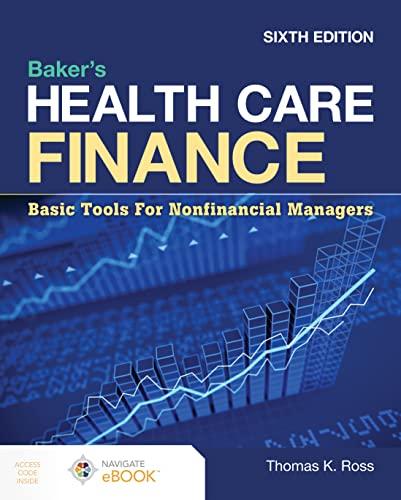Question
Security Beta Standard Deviation Expected return S&P 500 Risk-free security Stock D Stock E Stock F 1.0 0.0 ( ) 0.8 1.2 15% 0% 40%
| Security | Beta | Standard Deviation | Expected return |
| S&P 500 Risk-free security Stock D Stock E Stock F | 1.0 0.0 ( ) 0.8 1.2 | 15% 0% 40% 20% 25% | 9.0% 3.0% 12.0% ( )% ( )% |
- Figure out the market risk premium based on both S&P 500 and the risk-free security.
- Figure out a beta for Stock D based on CAPM.
- You would like to compare Stocks E and F.
- If Stock E has the average return of 10%, figure out the expected return and the abnormal return, alpha (), for Stock E based on CAPM.
- If Stock F has the average return of 13%, figure out the expected return and the abnormal return, alpha (), for Stock F based on CAPM.
- Considering the abnormal returns for Stocks E and F, choose a better stock.
- You form two risky portfolios A and B by investing in Stocks D, E, and F.
- You invest 1/2 of your money in Stock D and 1/2 in Stock E. The correlation between Stock D and Stock E is 0.5 while the standard deviation of Stock D is 40% and the standard deviation of Stock E is 20%. Figure out the standard deviation and the expected return of the risky portfolio A. (Please use the expected return for Stock E calculated at Question 3)-a) above.)
- You invest 1/8 of your money in Stock E and 7/8 in Stock F. The correlation between Stock E and Stock F is 0.8 while the standard deviation of Stock E is 20% and the standard deviation of Stock F is 25%. Figure out the standard deviation and the expected return of the risky portfolio B. (Please use the expected return for Stocks E and F calculated at Question 3)-a) & b) above.)
- Given the risk-free rate of 3%, figure out the Sharpe ratio for Portfolios A and B and choose a better portfolio.
- You form a complete portfolio C by investing $8,000 in S&P 500 and $2,000 in the risk-free security. Given the information about S&P 500 and the risk-free security on the table, figure out the following.
- Figure out the standard deviation of the complete portfolio C.
- Figure out the slope of the Capital Allocation Line (CAL).
- Figure out the beta of the complete portfolio C.
6) A complete portfolio is composed of the risk-free security and a risky portfolio, P, constructed with two risky securities, X and Y. The optimal weights of X and Y in P are 40% and 60% respectively. Given the risk-free rate of 4%, X has an expected return of 10%, and Y has an expected return of 20%.
a) Figure out the expected return of the risky portfolio, P.
b) To form a complete portfolio with the expected return of 22%, what are the portfolio weights for the risk-free security and the risky portfolio P, respectively? Explain your transaction to achieve the return of 22%.
Step by Step Solution
There are 3 Steps involved in it
Step: 1

Get Instant Access to Expert-Tailored Solutions
See step-by-step solutions with expert insights and AI powered tools for academic success
Step: 2

Step: 3

Ace Your Homework with AI
Get the answers you need in no time with our AI-driven, step-by-step assistance
Get Started


